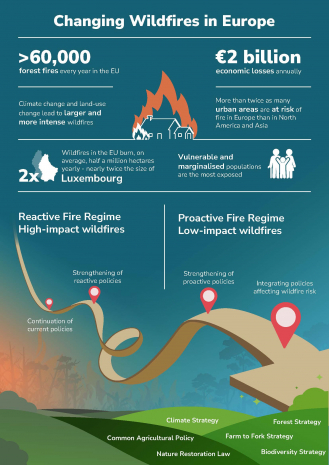Europe is entering a new era of fire. According to a new report by EASAC, the European regional network of the InterAcademy Partnership (IAP), more than twice as many urban areas in Europe are at risk of wildfires than in North America and Asia. On average, half a million hectares burn annually in the EU—nearly twice the size of Luxembourg.
Prepared by 23 scientists nominated by their national science academies, the report identifies a complex set of drivers behind this growing risk: climate change, rural depopulation, land-use change, and the build-up of flammable vegetation. It warns that drought and declining summer rainfall could double fire risk by the end of the century.
Yet current policies remain too focused on emergency response. EASAC calls for a shift in perspective—towards prevention, resilience, and long-term landscape management. The report outlines three urgent messages and eight policy recommendations to guide a new European approach.
The infographic summarises these core findings and proposals, including calls to restore carbon-rich ecosystems, integrate fire risk into reforestation plans, and improve public understanding of wildfire risks—particularly among younger generations. To address this continental crisis, Europe must act collectively, rethink land and climate policies, and learn to live with fire.
Read and download the full report here.

